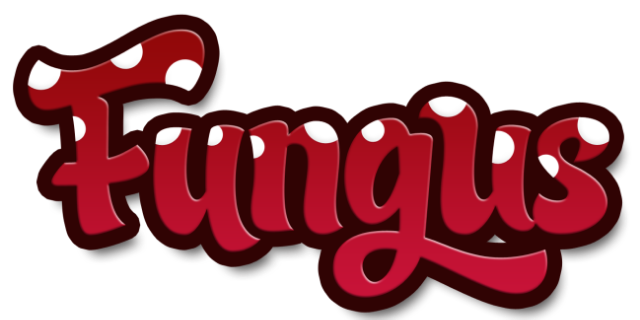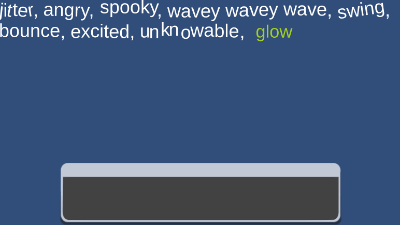When did you start making games and what motivated you to do it?
I wanted to make games for a long time, when I was like 13? I wanted to make games, but it was pretty hard as there was no development process back then. There wasn’t anything like unity. I was always interested in it but didn’t have much of an opportunity to make things myself for a long time, so I ended up wanting to study animation and from there I also realized that was also kind of complicated to do on your own. I decided to study illustration instead and that’s how I ended up in an art’s school. While there I met people making games in things like Unity and Game maker and thought at a certain point that I could try doing stuff myself! In fourth year in… 2012? I started making interactive 3D stuff in Unity.
Do you think that art background helped you with making games?
Yep definitely. It really helped me a lot. As I started making things, I was studying illustration. In France you learn how to tell stories through different mediums like text but also through images, and the combination of those two is basically what makes illustration, and I think video games do that also with things like sound and interactivity and all of those various feedback's allow you to tell a story. I used my knowledge of illustration and applied it to make games I guess.
What was the inspiration behind your most recent game, Lieve Oma? I know it’s an ode to grandmother but what is it personally to you?
Well before Lieve Oma, I worked on this train game with some friends, which I released yesterday for free (link) for free as we worked on it very hard and put a lot pressure on ourselves into making it but it felt like a bit too much for us as I was the only one doing the interactivity for It in unity. I was doing the programming and all the unity integration so it became too big of a project for me and burned me out. So we reached this decision that when we reached a playable build of the project that I would take a break from it and start a small project that I could do in about 6 months? Or something like that. So I basically started thinking of what would be interesting for myself to work on and it turned out to be the game about my grandmother (from an organizational side I guess). On a more inspiration level, it came from just in general walking simulators, or games about interactive fiction and I thought about the experience of walking and talking with someone else felt kind of like a healing process. It might help you psychologically digest things in your head and I thought it would be interesting to translate into a game because we’ve got all the tools for walking simulators.
Did you run into issues while developing Lieve Oma?, like how you did with the train game?
Yeah I ran into some problems, as I’m a self-taught programmer as there’s a lot of things I don’t know how to do properly. I had a hard time figuring out how to have the grandmother follow you, stand next to you, wait for you if she’s ahead, and join you if she’s behind. I figured out how that worked from racing games like Mario Kart, where you have this visual of whose in first place, second place etc. and I had to figure out how to determine whether the player was in front or behind the grandmother, and that was quite complicated at first. There were also things like what happens when you walk away during a conversation with the grandmother, do you just break up the conversation or do you pick it back up or what happens, just things like that were hard to figure out. There wasn’t anything big going like the previous train game. The problem with the train game was that the scope was too big. With Lieve Oma, I went in with the belief that if an aspect became good enough and I was happy with it, I’d move on to another aspect of the project.
Lets talk about your award, the WTF!? Award from amaze! How do you feel about it?
It was really really unexpected for me! Especially that award, I thought it would be given to a game that was really different as I felt I tried to do something differently narratively but in terms of how it looks, its not something visually new, or very different from things you’ve already seen. I tried to make something that felt finished so, there are other games that are little rougher on the edges so I thought those games would have a bigger chance getting that award. Amaze was my first games related event, so I was really just blown away by getting the award.
So you’re a game design celebrity now right?
Ha, I don’t think so.
Now, we’re on to fungus,
During Lieve Oma, you worked with fungus. How did you find working with it?
It was really really good. When you start working on a project like this, just a project where you want to have dialog in any kind of way, it’s a real challenge to implement a dialog system, fungus really was the best thing I could use. I was really glad to have found out about it, it changed my way of working and now integrating dialog and narration becomes almost second nature when working on a project. Before I was just avoiding it as it was really too complicate to do. Thanks to fungus it becomes very accessible, it opens up a whole part of game design that was originally difficult to do.
How’d you hear about Fungus?
I saw a presentation on the Unity YouTube channel from Unite that was filmed and posted online, I think it was Chris giving the talk, and when I saw it, I thought “this is perfect and I really need this.”
Is there anything you’d like to see added to fungus in terms of functionality, small changes, or anything?
In the end I personally ended up not focusing very much on the node based system and I mainly used the ability of reordering dialog boxes in the inspector. That’s where everything happens on my end. I was used to twine which works slightly different, that was interesting to come from as it works slightly different from fungus, but I think both systems could match to each other a little more maybe, that would be kind of interesting I guess. On the other hand though I got really used to working with fungus, I wouldn’t see anything that I’d change.
Id definitely be using fungus in the future, I really like how it comes with prefabs how dialog works and everything. It’s really useful and you can take from it and make it work how you want it too. I’ve seen something like ‘yarn’ I think it’s called which is way more complicated to get going at first. Fungus for me is the most efficient of doing things, it’s also very moddable in a way so if I need to extend on functionality it’s very easy.
Oh maybe one thing that might be interesting would be to make it easier to trigger dialog boxes in non-traditional narrative games, like in 3D environments. Triggering like you would trigger an animation, it would be really cool to be able to trigger it but also when you’re done clean it up very easily or something like that.
I’m kinda sad that at the end of working on Lieve Oma, that I haven’t really kept up to date Fungus updates as I didn’t want break the source files.
You can purchase 'Lieve Oma' here!































